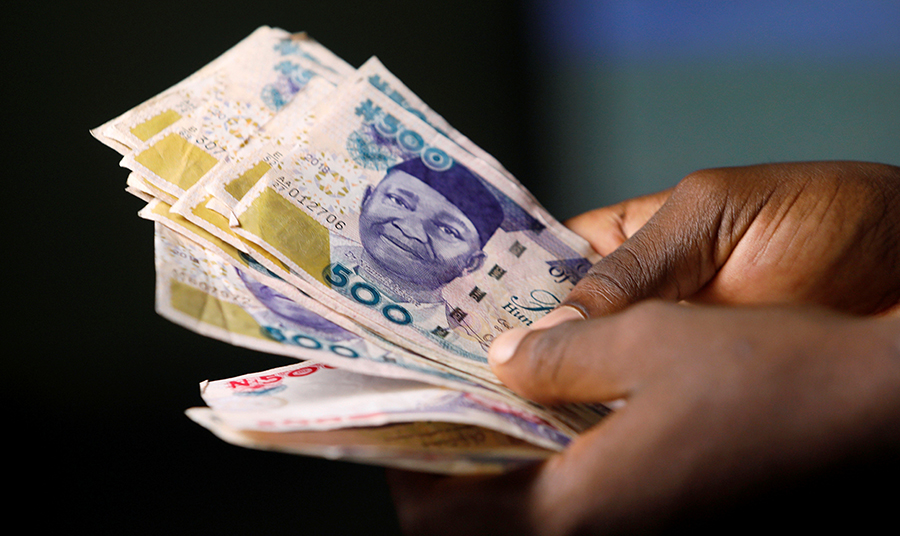The exchange rate between the naira and dollar at the I&E remained stable on Friday, closing at N386 to a dollar. This was the same rate that was recorded on Thursday as traders mulled over reports that the CBN had adjusted the exchange rate at the SMIS window. There was also stability with the opening indicative rate as it recorded N386.86 to a dollar on Friday. This was the same rate that was achieved the previous day.
At the black market where forex is traded unofficially, the naira also remained stable as it closed at N461 to a dollar on Friday which was the same rate that it exchanged on Thursday. The exchange rate at the beginning of the week was N460 to a dollar. By crossing N460, the exchange rate has broken a psychological ceiling going past N460 for the first time since 2017.
Nigeria continues to maintain multiple exchange rates comprising the CBN official rate, the BDC rates, and the NAFEX (I&E window). Nairametrics reported last week that the government has set plans in motion to unify the multiple exchange rates in line with requirements from the World Bank. Nigeria is seeking a world bank loan of up to $3 billion.
Forex Turnover
Forex turnover at the Investor and Exporters (I&E) window recorded a decline on Friday, July 3, 2020, as it dropped by 48.7% day on day, a reversal from the huge growth that it achieved on Thursday at the foreign exchange market. This is according to data from the FMDQOTC, an exchange where forex is traded by foreign investors and exporters.
According to the data tracked by Nairametrics, forex turnover decreased from $204.90 million on Thursday, July 2, 2020, to $105.05 million on Friday, July 3, 2020, representing a 48.7% decline on a day-to-day basis. Despite falling short of the over $200 million trading volume that was achieved the previous day and in January, it is still a decent turnover compared to the low trading volumes recently.
This was still enough to provide trading boost to help reduce the pressure and stabilize the market.
According to a July 2020 report from Moody’s, the foreign currency funding gap for Nigerian banks is expected to rise to $5 billion due to the current low oil prices, volatile forex inflows and lower diaspora remittances amid the coronavirus pandemic. These challenges are threatening to renew the foreign currency liquidity pressures that hit Nigerian banks during the previous oil crisis in 2016-2017.
The report also indicated that dollar shortages are expected to persist over the next 12-18 months if low oil prices continue thereby renewing the forex liquidity crisis that led to severe rationing of dollar and ban on importation of some items during the last oil price crash in 2015-2017.
Forex Liquidity Issues
Despite a decent turnover recorded on Friday and the stability of the naira at the I&E window and the black market, the volatility and uncertainty of the forex market still persist due to accumulated demand and liquidity shortages across markets. The rise in demand and contrasting drop in supply has called for another round of devaluation, which the CBN has insisted it has plans to implement.
The CBN on Friday adjusted the naira at the retail forex auction from N360 to a dollar to N380 to a dollar in a move that most analysts see as part of the plans to unify the exchange rate of the Naira. A devaluation last occurred in March. The apex bank wants to unify the exchange rate to conserve the dwindling external reserves which has been hard hit by demand by ever-increasing importers and the foreign investors wishing the exit. This current move by the CBN has moved the retail auction for importers and individuals, which is the official rate closer to the over-the counter-spot for investors and exporters. Nairametrics spoke to some traders who are still reviewing what the latest move by the CBN could mean on the future price of forex. Whilst some believe this is a major step towards reunification others believe the real test of the value of the exchange rate could be when the economy finally opens. For now, projection is all speculation, one trader informs Nairametrics.
The CBN still continues to warn against currency speculators who patronize the black market, thus widening the gap between it and the I&E window. The CBN maintains that the perceived demand cannot be substantiated following the drop in economic activities induced by the COVID-19 pandemic suggest demand should be low due to travel restrictions and drop-in economic activities.
The further decline in liquidity could further fuel speculations in the black market where the exchange rate has traded at a premium of N60+ over the last few weeks. The CBN claims most of the demand being cited is not represented by any official documentation and that it has informed foreign investors with genuine forex demand to be “patient” and that they will get their forex.
